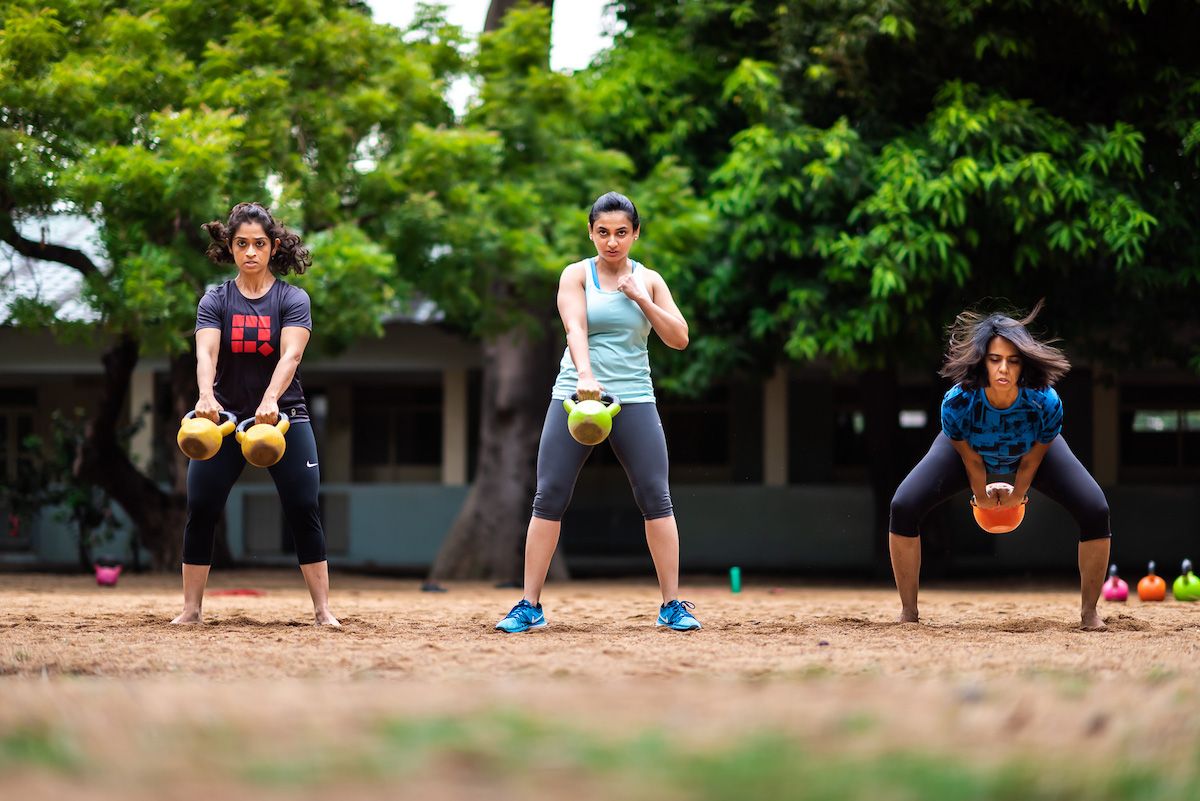The two biggest fear factors I hear about strength training are:
- The fear of getting big and bulky.
- The fear of injuries.
Let's talk about both of them.
Getting big and bulky
Let's start with what strength training is not.
It is not bodybuilding. It is not big, bulky muscle. And yes, it is possible to be immensely strong without looking like that mental image you have of "that's what a person going to the gym looks like."
More often than not, you will put on muscle when you lift heavy weights. But let's get this straight - putting on muscle is not easy. It requires a lot of literal hard work. Plus a good diet and sleep. And that's to put on muscle - not to look big and beefy. A kilo of muscle does not take up much space.
If you put on 5% of your body weight as muscle and lost 5% of your body weight as fat, you will look leaner and stronger. Let's say you weigh 100 kilos. 5 kilos of fat is lost, which takes up a lot more space than 5 kilos of muscle. Your weight doesn't change but your body composition changes quite drastically.

But if for whatever reason you are averse to putting on too much muscle, you can train around it. But you need not because (a) it is not that easy to put on muscle and (b) muscle is good for you.
But because we are inundated with hoardings and photos of big, beefy muscles, we wrongly assume that is the end goal. Nope.
Nervous system + musculoskeletal system
Strength training involves using any form of resistance - your body weight, an external load like a barbell or kettlebell - to train your nervous system and subsequently your musculoskeletal system to get stronger.
It is not only a hardware upgrade.
It is a software upgrade AND a hardware upgrade.
When you lift weights, your nervous system needs to send the right signals to the right muscles to lift them. The reason you are not able to lift weights beyond a specific point is your nervous system hasn't been asked to recruit the necessary workers before this. That's why, with sensible strength training and progressive overload, you can lift loads that you couldn't in a matter of weeks. And without getting bigger or heavier.
Because the software learns to use more of the existing hardware.
Women vs men
It is harder for women to get big muscles. Because of how our hormones work. It is relatively easier for men - but it is still a lot of hard work.
The common expression of looking toned requires you to strength train. You want to look leaner and more muscular. You want to lose fat while putting on muscle.

The solution is strength training with a reasonable diet. That way, you put on muscle, you lose body fat and without bothering about the weighing scale, you look completely different.
Injuries
Injuries happen. Not gonna lie or sugarcoat this.
I tweaked my back last Monday while doing some kettlebell snatches. Something I've been doing three days a week for the past 14 months as part of my training. And I've been out all week. I've been in pain and now progressing into severe discomfort.
This is not the first time as well. I've pulled my back three times. And each time, it takes me one week to get pain-free. And one month before I can get back to training.
Three times in 15 years. And I've probably had 3 other injuries over this period from training. That's 6 times in about 3000 training sessions or 0.2%. And all 3 happened because I broke one of my guidelines below.
Not bad at all. Of course, this is n=1.
Injuries happen when:
- the technique is poor.
- warmup and/or cool down is insufficient.
- not fully focused on the training.
- not using the right muscles due to other injuries and compensations.
- training too hard and not taking enough time off.
- bad luck.
Strength training, over the long term, will reduce the chances of injuries happening. For that to happen, you need to focus on great technique. You need to do a proper warmup. You need to stretch. You need to stay mentally focused - makes sense to do so while swinging a heavy kettlebell or lifting a heavy barbell.
And as you put in the quality effort, your body knits itself together to move better.
What's next?
Muscle is gold. The older we get, the harder it is to put on muscle.
Muscle helps with better metabolism, injury prevention, with anti-ageing. It helps you look better and feel better.
Strength training increases your bone density. It increases your resilience to injury and mishaps.
Strength training makes you stronger, inside and out.
Don't let the false notion of "I'll get big and bulky" put you off.
On injuries, it is a more legitimate concern. Sheer probability i.e. you are going to lift weights more often than the average person makes so.
But please remember, there are 100s of instances where your strength training would've built you up, made you resilient. And you won't get injured at all, or as seriously as you might have otherwise. Since those are never things we can count on, we hear the stories of the injuries only.
And injuries and pulled backs and all that happens, whether you strength train or not. Our posture. Our weak muscles. These cause a lot more injuries than lifting weights.
I hope you will think twice if one of the two reasons above has been a limiting factor.
